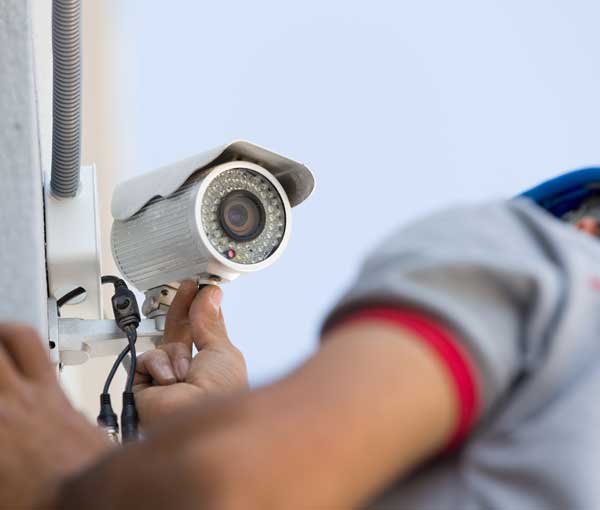I. Introduction

A. Importance of considering non-physical security measures
In the modern era, physical security measures alone are not enough to protect our homes. It is crucial to address non-physical security measures to counter the ever-evolving cyber threats that can compromise our privacy and online security.
B. Overview of the article on non-physical security measures for home safety
This article focuses on highlighting non-physical security measures that can enhance home protection. By exploring cybersecurity measures and digital privacy practices, readers will gain valuable insights into safeguarding their homes from cyber threats.
C. Thesis statement: Addressing the various non-physical security measures that can enhance home protection
This article aims to guide readers on the implementation of non-physical security measures, specifically cybersecurity measures and digital privacy practices, to bolster home safety in the digital age.
II. Cybersecurity Measures
A. Securing Wi-Fi Networks
- Strong password selection and regular updates To prevent unauthorized access to home networks, it is important to choose strong, unique, and hard-to-guess passwords. Regularly updating passwords adds an extra layer of security.
- Enabling encryption and disabling guest network access Enabling Wi-Fi encryption, such as WPA2, ensures that network traffic is encrypted, making it harder for hackers to intercept data. Disabling guest network access prevents unauthorized individuals from accessing the network.
B. Implementing Network Firewalls
- Introduction to network firewalls A network firewall acts as a barrier between a private internal network and external networks, monitoring and controlling incoming and outgoing network traffic.
- Configuring and maintaining firewall settings Properly configuring and regularly updating firewall settings helps block unauthorized access attempts and protect the home network from potential threats.
III. Digital Privacy Measures
A. Protecting Personal Information
- Safeguarding sensitive data, such as social security numbers and financial details Implementing data protection practices, such as not sharing personal information unnecessarily and avoiding suspicious websites, helps safeguard sensitive data from falling into the wrong hands.
- Utilizing secure data storage and encryption Storing sensitive data in encrypted formats and utilizing secure cloud storage services or external hard drives with encryption capabilities adds an extra layer of protection against data breaches.
B. Strengthening Online Identity
- Utilizing strong, unique passwords for online accounts Using unique and complex passwords for each online account helps prevent unauthorized access in case one account is compromised.
- Enabling two-factor authentication for added security Enabling two-factor authentication, which requires an additional verification step, such as a fingerprint scan or a unique code sent to a registered device, adds an extra layer of security to online accounts.
IV. Security Awareness and Education

Introduction: In today’s digital age, being aware of and educated about security measures is essential for individuals and families. This blog post aims to provide comprehensive information on recognizing and avoiding phishing attacks, educating family members about online safety, and the importance of backup and recovery measures.
A. Recognizing and Avoiding Phishing Attacks
Phishing attacks continue to be a prevalent threat in the online world. Understanding common phishing techniques will empower you to identify and avoid falling victim to these scams.
- Email phishing: Hackers send deceptive emails pretending to be from legitimate organizations, tricking users into revealing sensitive information. It’s crucial to scrutinize the email address, check for spelling and grammar errors, and never click on suspicious links.
- Smishing: This phishing technique involves fraudulent text messages or SMS. Be cautious of unexpected text messages asking for personal or financial information. Always verify the source by directly contacting the organization through a trusted phone number.
- Vishing: In vishing attacks, scammers impersonate reputable organizations over the phone to obtain sensitive information. Avoid sharing personal information over a phone call unless you initiated the contact. Verify the caller’s identity independently before providing any details.
- Spear phishing: This targeted approach involves personalized emails designed to deceive specific individuals. Pay attention to any email that appears unusual or requests confidential information. Contact the supposed sender separately to confirm its legitimacy.
To effectively combat phishing attacks, it’s crucial to know how to identify and report these attempts.
- Recognizing common signs: Look for generic greetings, urgent requests for personal information, or emails that create a sense of urgency. Be skeptical of messages claiming account suspensions, prize winnings, or financial offers that appear too good to be true.
- Reporting phishing attempts: If you receive a phishing email, report it to the organization being impersonated. Additionally, forward the email to your email provider’s abuse department or to organizations like the Anti-Phishing Working Group (APWG).
B. Educating Family Members

The internet has become an integral part of our lives, and it’s crucial to educate family members, especially children, about online safety and responsible internet usage.
- Teaching children about online safety:
a. Online privacy: Explain the importance of keeping personal information private and not sharing it with strangers or on social media platforms. Teach children to use privacy settings appropriately.
b. Cyberbullying awareness: Discuss the prevalence and impact of cyberbullying. Encourage children to communicate openly if they encounter cyberbullying and assure them of your support.
c. Safe browsing habits: Teach children to only visit trusted websites, avoid clicking on suspicious links, and be wary of downloading files from unknown sources.
- Encouraging skepticism towards online scams and suspicious messages:
a. Awareness of scams: Educate family members about different online scams, such as fake job offers, lottery scams, and romance scams. Emphasize the importance of skepticism and critical thinking.
b. Suspicious messages: Teach family members to be cautious when receiving unsolicited messages asking for personal or financial information. Encourage them to verify the source independently or consult with you before responding.
c. Password security: Emphasize the significance of strong and unique passwords. Encourage the use of password managers and regular password updates.
V. Backup and Recovery Measures

Data loss can be devastating, whether due to a security breach or physical damage to devices. Implementing backup and recovery measures is essential to ensure the protection and availability of your valuable information.
A. Regular Data Backups:
- Choosing reliable backup solutions: Evaluate and select backup solutions based on your needs. Whether it’s cloud storage, external hard drives, or network-attached storage (NAS), ensure the chosen method is secure and reliable.
- Scheduling regular backups: Establish a backup schedule that meets your requirements. Automating the process ensures consistent backups while minimizing the chance of human error.
- Storing backups in secure locations: Consider storing backup copies in multiple locations. Offline backups, such as external hard drives or DVDs, should be kept in secure locations, preferably away from your primary residence.
B. Creating a Disaster Recovery Plan:
- Developing a plan for data restoration: Create a detailed plan that outlines the steps required for data restoration in the event of a security breach or physical damage. Include processes for accessing backups and recovering data.
- Evaluating and testing the recovery plan periodically: Regularly review and update the disaster recovery plan to account for any changes in technology or organizational needs. Test the plan periodically to ensure its effectiveness and identify any potential issues beforehand.
Conclusion: In an era where personal and sensitive information is constantly at risk, security awareness, education, and backup measures are vital. By recognizing and avoiding phishing attacks, educating family members about online safety, and implementing backup and recovery measures, you can significantly minimize the risks and protect your valuable data and digital well-being. Stay vigilant, stay informed, and stay secure.



